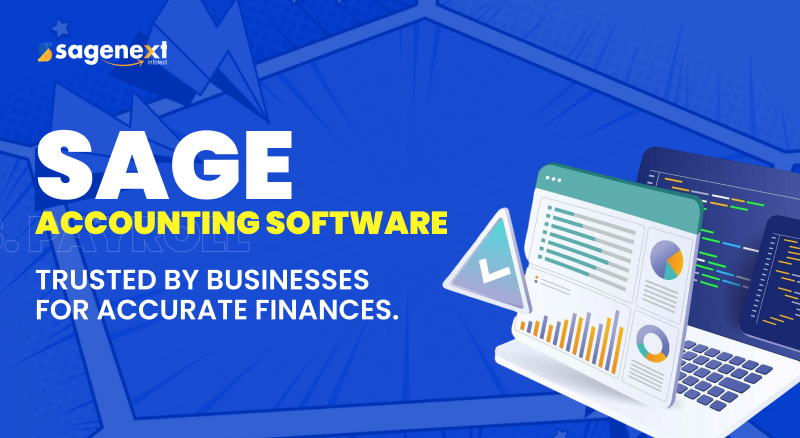Bookkeeping is essential to every business whether small, medium, or large. It involves analyzing and presenting accurate records of a business's financial transactions over a period of time. This record helps business owners and managers to see the financial situation of a company at a glance and make decisions that will improve cash flow.
As easy as it seems, proper bookkeeping is tedious. It involves a lot of stocktaking, tax calculation, and everything that sounds like the boring accounting we didn't want to learn in high school. Now that you own a business, you have to handle the financials. Even when you hire an accountant to keep your books, you still need to invest in tools that will make the job easier.
Previously, accounting was a dreaded task for even the savviest accountant. Thankfully today, due to advancements in computer technology and software development, accounting software has become very popular. The use of software for bookkeeping has now made it easier for companies to keep accurate records as well as make adequate plans for the future.
What is Sage Software for Accounting?

Sage software for accounting is powered by Sage, a company that understands the way businesses operate and aims at providing solutions to their challenges. The software contains different features for accounting. You only need to enter your data and the tool will do the rest. It displays financial reports using very simple terminologies that everyone can easily understand.
History of Sage Accounting Software
Sage came to the limelight when David Goldman saw the need to automate accounting basics in his business. To achieve this, he partnered with two students from Newcastle University, Graham and Paul. They successfully developed software that was able to carry out repeated accounting tasks.
David soon discovered that other businesses might need a similar solution. In 1981, the team began selling the solution to printing houses, which gave birth to the famous Sage that we know today. However, the software now serves other industries apart from printers and publishers. The current solution it offers is more diversified, reaching different categories of customers with unique accounting needs.
Over the years, Sage has evolved to become a leading figure in the world of enterprise resource planning software (ERP). It partners with other businesses to ensure that its accounting solution is widely accessible. The company now provides a cloud-based solution to cater to the needs of remote workers provided they have access to the internet. This shows that customers are at the center of Sage's activities.
Types of Sage Accounting Software
 Sage Business Cloud Accounting
Sage Business Cloud Accounting
Sage business cloud accounting is at the apex of Sage's accounting solution. It targets small businesses that may not have sufficient funds to pay for the services of a professional accountant. From the name, you can already tell that it is cloud-based. Therefore, its features can be accessed from anywhere as long as there is internet connectivity.
Sage business cloud accounting features include:
Debtor manager
With this feature, you can easily remember who owes you, the amount, and when the payment is due. You can also send follow-up messages to customers and get paid faster.
Electronic Invoicing
Sending invoices online is highly beneficial as you do not have to print anything. The software allows you to convert your quotation into an invoice, so you can send it immediately without doing anything extra. You can also track the activity on the invoice. This enables you to know when a customer has received the invoice and which payments are overdue.
Additionally, there is room for customization such that you can choose the colors and font that you prefer on the document. You can also add your company logo to make it more professional. In case Sage did not include specific details that are unique to your business, you can edit the invoice and include them.
Stock Management
With this feature, you can know how much you earn from each item you sell. And if you sell services or items that do not require stock tracking, you can still track them with this tool. Your items are organized for easy identification.
Advanced Inventory
This automated feature saves you time spent on tracking inventory. After each sale, the tool updates your inventory, thereby, reducing the number of errors that may arise during manual entries.
Sage Business Cloud Accounting is subscription-based and offers two plans which can be paid for either on a monthly or annual basis. Choosing the annual plan will save you 7.5 percent of the fees. Each plan offers a 30-day free trial.
- Sage Business Cloud Accounting Start costs $10 per month and $111 per year.
- Sage Business Cloud Accounting costs $20 per month and $222 per year for 2 users. Additional users cost $22 each per year or $2 each per month.
 Sage Time Slip
Sage Time Slip
This is a billing and time tracking tool that enables businesses to accurately capture the number of billable hours of customers as well as send invoices to customers. It is suitable for legal firms and service-oriented businesses.
Sage has an e-Center for recording time slips through a web platform. You can do this on your smartphone or tablet while on the move. You can integrate Sage Time Slip with third-party tools like QuickBooks, Outlook, and LawPay. If you are worried about the learning curve, you do not have to be because the company integrates training modules in the software.
Sage Time Slip pricing is as follows:
- Starter Tier: $515 per year
- Standard Tier $980 per year
- Pro Tier: $1300 per year
- Elite Tier $1450 per year
 Fixed Asset
Fixed Asset
This tool offers four modules: planning, depreciation, tracking, and reporting. They help users understand and manage their fixed assets. It has an audit advisor feature that helps users to comply with the Internal Revenue Service regulations. Its depreciation module contains worksheets and tax forms such as 4797, 4626, 4562, 4255, and 3468.
Additionally, the Sage Fixed Asset has a tracking feature that helps you to track the cost of your project so you can know which item will become a fixed asset. You can also see how the asset will depreciate over time and track each item with an auto timestamp to avoid tax penalties.
Sage Fixed Assets now offers cloud hosting in collaboration with WebHouse so users can access their accounts from the comfort of their homes, offices, or just anywhere. The platform is also secure as it encrypts communication between the server and users. It also includes multiple-factor authentication and Cisco's single sign-on feature.
To get started, call 1-800-368-2405 or visithttps://www.sage.com/en-us/products/sage-fixed-assets
 Sage Payroll
Sage Payroll
Are you finding it difficult to process year-end payroll? With Sage Payroll, you can manage year-end payroll for about 100 employees without feeling the heat. It is also cloud-based. This means you can conveniently file P60s and pensions, prepare payslips, and pay on time. You can try it for free for 3 months, then pay £7 per month for 5 employees.
 Sage 50 cloud Accounting
Sage 50 cloud Accounting
This product combines the traditional desktop-based account and the flexibility of cloud access. It has features for managing payments, tracking expenses, reconciling transactions, tracking inventory, and much more.
The plans and pricing are as follows:
- Pro Accounting: $567 per year
- Premium Accounting for 1 user: $880 per year (you can add up to 5 users)
- Quantum Accounting for 1 user: $1460 per year (you can add up to 40 users)
As a new customer, you will save 40 percent for the first year.
 Sage 200
Sage 200
This is highly customizable software that can help you take your business to the next level. You can manage your customers, supply chain, accounts, including multiple companies from your desktop. You can also take advantage of cloud access to collaborate with team members in real-time.
With this software, you can automate bank payments instead of entering the same data all the time. You can also accept payments through PayPal, Stripe, or GoCardless in addition to credit cards and wire transfers. You can integrate third-party tools such as Outlook and Microsoft 365.
 Sage People
Sage People
This software helps you to manage your entire workforce from any location. It functions as a human resource manager. Even if your company has offices in different cities, you can see all the staff members at a glance, their attendance, and the number of days each person was away on leave.
Hiring talents to fill a role in your company could be less tedious with Sage People. It eliminates the need to advertise on several platforms, a process that may attract people who do not qualify for the job. It does not only assist you with recruiting but also screening and onboarding new hires.
 Sage HR
Sage HR
Although quite similar to Sage People, this software offers different features for people management. Your employees can request leave through Sage HR and you can approve it through the mobile app, email, or Slack. It also enables you to track your team's schedule in a collaborative space.
Additionally, you can easily organize anonymous surveys to get feedback about your business from your employees. Team members and managers can also give feedback about each team member to measure their performance all year round. Sage HR allows you to share the company's goals and set priorities to ensure your team is united even if you're not physically present in the office.
When it comes to handling receipts, you don't have to be in the office to turn them in. simply take a photograph of the receipt and upload it to the mobile app. With a single click, the app can automatically enter the receipt as an expense. Sage HR assists with shift scheduling, timesheets, and recruitment.
Additional Sage Accounting Software Product
 Sage 100cloud
Sage 100cloud
This product offers more than what you can get from a traditional ERP. Because it is cloud-based, you can access it from a smartphone, customize your user interface, and manage your workflow in one place. It is suitable for manufacturers, wholesale distributors, and service businesses.
The features of Sage 100cloud include the following:
- Automated bank transactions and account reconciliation
- Import data with ease
- Business insights
- Budgeting and planning
- Paperless Office for automated reporting
 Sage Intacct
Sage Intacct
If you're looking for cloud accounting software that offers deep financial and operational insight, Sage Intacct is your best bet. It is preferred by the American Institute of Certified Public Accountants (AICPA), a body that sets the professional standards for CPAs.
The product can fit into the needs of different businesses such as general contractors, real estate developers, manufacturers, wholesale distributors, and so on. You can also integrate it with other solutions like SalesForce.
 Sage 300cloud
Sage 300cloud
Formerly known as Sage ERP AccPac, the software offers a personalized solution for both medium and large businesses. You can scale up or down, depending on the features you need per time. Its features include sales and purchasing management, inventory management, Business Intelligence, and customer service integration.
 Sage X3
Sage X3
If you're running an agile company, Sage X3 will help you to meet the changing needs of your customers faster than other ERP systems. It delivers quick insights into your performance and operational costs. It is highly flexible and fits into different industries such as distribution, manufacturing, chemical enterprise, food and beverage, and services.
What is the Sage System Used For?
Generally, the Sage system is used to manage a company's accounting processes such as:
- Recording transactions
- Tracking expenses
- Calculating profit and loss
- Creating electronic invoices and tracking them
- Preparing payroll
- Receiving payments
How to Set Up Inventory in Sage
For this section, I will use Sage 50 to explain how you can set up inventory in Sage.
- Open Sage 50 software.
- Click Inventory & Services on the left side of the interface.
- Select “Inventory & Services” on the wider screen. You will see a drop-down, then select “add inventory & services”.

Sage recognizes two types of inventories for businesses that sell products and those that sell services. You can see the “type” section has two boxes: inventory and services.

For products:
- Check “inventory” in the “type” section
- Input a unique number or name for the item.
- In the description bar, input a category for the item.
- Select “linked” to choose an asset, revenue, cost of goods sold (COGS), and variance.
- Select “history” to input the opening quantity and opening value.
- Select “Save and Close” or “create another” to create a different item.
For services:
- Check “service' in the “type” section
- Select “unit' to enter the unit of measure.
- Select “pricing” to enter the price of the service.
- Select “linked” to select your revenue and expenses.
- Select “Save and Close”.
What Are the Features of Sage Accounting Software?
Sage accounting software has features that make accounting easy for businesses. They include the following:
 Invoicing
Invoicing
You can easily create a customized invoice and send it to a customer in seconds. You can also track when the payment will be due from your desktop or smartphone.
 VAT Returns
VAT Returns
The software takes the burden of preparing VAT off your neck. You can also submit returns directly from Sage to Her Majesty's Revenue and Customs (HMRC).
 Link Bank Accounts
Link Bank Accounts
You can easily link your bank accounts with Sage to automate all your bank transactions. This way, you do not have to manually input data in the software after sending or receiving payments. The software also reconciles your account with the record it already keeps. If there is any error such as double entry, the software will discover it.
 Cash Flow Management
Cash Flow Management
Stay in control of your business by knowing what goes out and what comes in. And that's what Sage accounting software offers. You also get to see the report in a colorful graph format. With this feature, you can make financial plans and projections for your business.
 Inventory Management
Inventory Management
Overstocking is not a cost-effective approach and when you can't supply the products your customers request, you lose them to your competitors. Hence, Sage's inventory management feature helps you to track the items you have in stock, so you do not overstock or understock.
 Third-Party Software Integration
Third-Party Software Integration
Sage offers unlimited opportunities as it allows you to integrate various software that makes your work easier. It is compatible with the following: Microsoft 365, Outlook, Excel.
Benefits of Sage Accounting Software
The benefits of using Sage accounting software are as follows:
 Faster Reporting
Faster Reporting
You can quickly get a detailed report of how your business is faring since your transactions are automatically updated. The basic reports you will get include sales tax, profit and loss, accounts receivable, accounts payable, and cash flow projections.
 Organised Inventory
Organised Inventory
Whether you're offering products and/or services, you can easily organize everything with the inventory feature. You can add your products/services, categorize them, and customize the prices for regular, preferred, and web customers.
The beauty of Sage is that its basic plan offers inventory management, then if you subscribe to higher plans, you will have access to more personalized inventory tools.
 Easy Tax Payment
Easy Tax Payment
You can't evade tax just because you weren't prepared. In fact, doing so comes with huge penalties. All the same, you do not want to file taxes with the wrong information, which is why Sage offers a tool for easy tax filing and payment. It saves you the stress of preparing for the tax season, so you can file taxes quickly and focus on making profits.
 Remote Access
Remote Access
Sage accounting software is not limited to your desktop in the office. On those days when you are on a business trip, vacation, or any activity that takes you out of the office, you can still access your business records from your smartphone. You can also collaborate with team members while on the move.
 Database Security
Database Security
Because Sage offers many cloud-based options, its platform is secure using end-to-end encryption and multiple-factor authentication. So, if you are worried about exposing your financial data, Sage has got you covered.
In addition to the security measures, you can choose the number of users that have access to the account. You can also change the settings of a previous record such that it can only be viewed, not edited. This reduces the risk of fraud.
How Does Sage Accounting Software Work?

Sage accounting software is subscription-based, so you need to choose a plan that suits your business's needs. Plans like Sage Payroll offer three months free. Afterward, you will be required to pay for at least 5 users. Others offer 30 days free, then you can either cancel or subscribe to the plan.
After signing up, your account has an in-built feature that will assist you in completing the setup. You need to input your account name and business address. You can name the account using your company's name.
The next step is to link your bank account. This is optional, but it permits Sage to automatically download your bank feeds to your account, which comes in handy when balancing your account.
You can proceed to input the information of your suppliers and customers. If you already have it in Excel, you can import it directly to Sage. Additionally, you can view a summary of your cash flow, sales, expenses, and other information on your account dashboard. You can invite a maximum of 5 people to share the account with you but you must assign roles to each person. This way, you will be able to grant access to your company's accountant.
Sage accounting software is easy to use whether you are an accountant or not. You can also seek help from the online community or chat with a customer service rep.
What Are the Pros and Cons of Sage?

Pros
- The company offers 30 days free, no hidden fees, and you can cancel at any time.
- Sage offers various products and they are mostly cloud-based, so you do not have to install anything.
- Reports are well-detailed and generated in a timely fashion.
- Customizable user interface and invoicing
- You can manage different companies through one account.
- You can link multiple bank accounts and credit cards with the software.
- The software is compatible with some 3rd party applications.
Cons
- Sage's website does not provide enough information on most of its products, leaving you to contact them or fill in the gap.
- The basic plans do not offer time tracking or payrolling. To access either of them, you need to pay for Sage Timeslip or Sage Payroll in addition to your Sage accounting software subscription.
- The colors on the website are not attractive.
Who Needs Sage Software?
Sage software is suitable for small and medium-sized businesses but larger enterprises can also utilize its features. The following businesses can benefit from using Sage accounting software:
- Transportation and logistics
- Retail and wholesale trade
- Metal fabrication
- Medical and industrial equipment manufacturing
- Cosmetics
- Pharmaceuticals
- Nutraceuticals
- Food and beverage
- Chemical production
- Rental companies
- IT services
- Engineering services
- Law firms
- Advertising firms
What is the Difference Between Sage and QuickBooks?
Sage and QuickBooks are popular business management tools. Their features overlap in the aspect of basic bookkeeping, but they are not the same. Here are some marked differences between Sage and QuickBooks:
Sage is an Enterprise Resource Planning tool, which means you can use it to do more than just basic accounting. It handles people management, team collaboration, and so on. QuickBooks, on the other hand, is a traditional bookkeeping software for managing taxes, income, and expenses.
Sage's products target specific industries and are highly scalable. This implies that small businesses can use one of Sage's products, then upgrade as they grow. QuickBooks is not built with any industry in mind and it is specifically for small businesses. So, when your business expands, the tool may no longer serve you.
Sage allows you to try its products for 30 days without requesting your credit card details. The company just wants you to have a feel of their offering so you can decide whether you want to subscribe or not. But with QuickBooks, you must key in your card details to use the free trial. And as soon as the 30 days are over, the company starts charging you. So, if QuickBooks doesn't look like the right tool for you, ensure to opt out as soon as possible.
Types of Businesses and Industries That Use Sage
The businesses and industries that use Sage are:
- Manufacturing companies
- Non-profit organizations
- Construction/engineering firms
- Distributors
- Businesses that sell products in large quantities
What Services Does Sage Offer?
Sage offers the following services:
- Cloud-based accounting software for managing invoices, payments, inventory, and so on from any device.
- Intelligence reporting
- Human Relations solutions
- Supply chain management
- Customer relationship management solutions
What Are the Alternatives of Sage?
 Xero
Xero
Xero is cloud-based accounting software that is suitable for small and medium-sized businesses. You can use it for basic tasks like payrolling, invoicing, and paying multiple suppliers. The software offers an overview of your business's financial position, so you can make the necessary adjustments.
You can access all the features of Xero for 30 days before deciding whether it suits your business. The pricing starts at $22 per month with optional add-ons like claim expenses, track projects, and analytics. Each add-on attracts extra fees.
 QuickBooks
QuickBooks
This accounting software is useful for tracking expenses and income. It also has an on-premise and an online option, depending on your preferences. It is suitable for small and medium-sized businesses and freelancers.
Its features include invoicing, tracking bills, financial reports (cash flow, profit and loss, and balance sheet), payrolling, tracking inventory, mileage tracking. QuickBooks offers 30 days free trial and its least plan starts at $16 per month for one user and your accountant.
 FreshBooks
FreshBooks
FreshBooks is cloud-based accounting software that is flexible and user-friendly. Freelancers and small businesses prefer this tool because it is easy to use and has a mobile app that you can use to manage your projects and accounts from any location. Self-employed professionals and contractors can also benefit from using FreshBooks.
Its features include invoicing, time tracking, organizing expenses, team collaboration, double-entry accounting, and accepting payments. It also integrates with other tools like Slack, MailChimp, Gmail, Stripe, Fundbox, and many more.
You can try FreshBooks for free and cancel at any time. Its basic plan starts at $180 per year for 5 billable clients.
What Are the Limitations of Sage?

Sage offers a simple accounting solution to businesses, but it is not without flaws. First, the software helps to track inventory; however, you must create individual purchase orders manually. So, if you sell products, this will take a lot of time. You may even make mistakes and enter the wrong order especially when you have a lot of orders to key into the system.
Second, you can't track time except you subscribe to Sage Time Slip. This means that you will input billable hours manually. Not only is this stressful but also gives room for errors and estimations that may not reflect the exact number of hours.
Third, recurring invoices are impossible with Sage. You must input the data of repeat customers every time they come back to purchase from your business. This is inconveniencing and I hope that Sage works on it really soon.
Last, you can't set automatic reminders for late payments, but you can schedule invoice statements every month.
Is the Sage Software Cloud-Based?

Sage software is cloud-based, which gives you the flexibility that you need to run your business from anywhere. You can collaborate with team members or your accountant in real-time. Also, you can access the software on any device that is connected to the internet.
Sage offers online training so you can get acquainted with their platform, new services and features, and upgrades. And if you have technical issues, you can contact the support team online or visit the online community where you can get help from other users.
Since the software is cloud-based, you should be concerned about security. Remember that you are putting out a lot of information about your company online. So, what if there is a data breach, how would Sage handle it?
Fortunately, Sage is also concerned about security. It has established an ISO 27001 information technology to protect the data of its customers. It also stores data in Amazon Web Services (AWS), a platform that is compliant with updated security measures.
Sage ensures that all communications on its platform are encrypted using the most recent version of TLS (transport layer security). Also, it backs up stored data at intervals, taking care to encrypt it as well. Even if someone steals a copy, they won't be able to use it because Sage encrypts data at rest.
Additionally, Sage has a 24/7 security team that constantly checks for vulnerabilities and cyber threats. So, if you suspect there is a bug in the Sage software, you can contact the security team.
Conclusion
Although Sage serves many microbusinesses, professional accountants endorse the software because it minimizes error and makes bookkeeping easy. You can use it to accomplish several tasks besides managing your finances. The features of Sage accounting software include the following:
- Creating and sending customized electronic invoice
- Automated bank transactions and account reconciliation
- VAT preparation and submission
- Mobile app and cloud-based platforms for increased productivity and efficiency
Sage offers support in various forms: training, webinars, support team, and online community. Also, there is a package for everyone irrespective of the size or type of business.
Sage Software - Frequently Asked Questions
Is Sage accounting easy?
Sage accounting software is easy to use even if you do not have any formal knowledge of accounting. The company has a resource center where you can take online courses. They are self-paced, so if you don't understand anything, you can go over it again and again.
Who Is Sage?
Sage is a multinational company that produces enterprise software for enterprises. It is headquartered in Newcastle-upon-Tyne. It currently has more than eleven thousand employees with branches in over twenty countries. In addition to producing software, Sage supports NGOs in countries where it is domiciled through fundraising and material donations.
What are the main capabilities of Sage 50?
Sage 50 is a desktop version of Sage accounting software for startups. It is designed to do the following:
- Track expenses and income
- Receive payments
- Accounts receivable and accounts payable
- Inventory management
You can add options such as processing credit cards and payrolling. Sage 50 has a mobile application and integrates with 3rd party tools like Microsoft 365. Just like other Sage products, Sage 50 is built to suit specific industries. Also, you can invite a maximum of forty people to collaborate with you on the platform.
What is the current version of sage 50?
The current version of Sage 50 is Sage 50cloud. It features improved tools such as:
- Cash Flow Management: it allows you to see how your business is faring at a glance.
- Customizable invoicing: you can include your business logo and specific details that are unique to your business.
- Automated bank feeds: they eliminate the need to enter data manually.
- Automated account reconciliation: it reduces errors in data entry.
- Advanced inventory tracking: it helps you to know the items in stock and alerts you when your stock is low. You can also track the quantities and price of products ordered. Whenever a product is sold, the software automatically updates the inventory.
- Project management: it enables you to know the duration of projects, how much you will spend on executing jobs, and how much profits you will earn.
- Payrolling: you can manage payroll taxes and create checks based on the number of hours your employees spent on accomplishing tasks. You can also track the number of hours an employee was on a sick leave or vacation.
- Sage 50cloud's reporting tool gives quick insight into projects, payroll, inventory, cash flow, and so on. You can also print the reports when you need them.
Is Sage an ERP system?
Sage is ranked among the top 3 ERP systems in use. An ERP (enterprise resource planning) is a category of software for managing several business operations. This is what classifies Sage as an ERP because it is more than just accounting. It handles project management, supply chain, and compliance.
What are some advantages of using sage 50 over a manual accounting system?
Sage 50 is a computerized method of bookkeeping. As a result, it saves time and reduces the chances of making mistakes in data entry. When you handle a lot of data, the chances that you will make mistakes are high but with software, the system can detect the error for you.
Additionally, Sage 50 accounting software offers automated backups, which grants you access to your data at any time. This is near impossible with a manual accounting system. For instance, if there is a fire outbreak in your office, you won't be able to retrieve your files.
Electronic bookkeeping is an easy and fast means of sending customized invoices to customers. With a manual system, you need to print large copies of the invoice, then enter the customer's details manually.
Also, you can't make any changes to paper invoices unless you want to reprint the entire document. For instance, if you want to include your company logo, you need to discard the set of paper invoices you already printed and then print another batch. This amounts to a waste of paper.
Sage 50 gives you a report of your balance sheet when you need it, provided you have updated some transactions on the software. However, a manual accounting system requires you to wait for the accounting period to be over before you can see how your business is faring. In some cases, this report can be quarterly or annually.
Sage 50 allows you to link your bank accounts and credit cards. This way, any transaction you make is updated on the software. And if you're using Sage 50cloud, your data automatically stores in the cloud. The benefit of syncing your bank transactions is that you do not have to manually enter your expenses and/or income in the system.
With remote access from the improved version of Sage 50, you do not have to be in the office before you can get the information that you want. You can access your customers' data, check on your accounts, and collaborate with your accountant or other team members from any location.
Computerized bookkeeping takes away the need to manually prepare documents like invoice, receipt, tax documents, and payslips. As a result, you can focus on achieving your business's objectives.
These carefully selected partners contribute their expertise in technology, infrastructure and support solutions, enhancing reliability and performance. Through this collaboration, Sagenext delivers a dependable and efficient hosting environment, allowing users to work without disruptions and enjoy optimal stability and security.




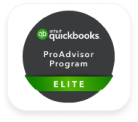
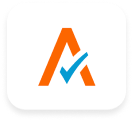


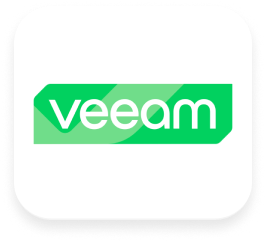



Sagenext has consistently garnered distinguished recognition for its exceptional hosting services, characterized by a resolute dedication to innovation and customer delight. This unwavering commitment to excellence has been demonstrably acknowledged through the receipt of numerous prestigious awards and accolades, solidifying Sagenext's position as an industry leader.
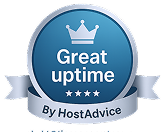 Great Uptime by HostAdvice
Great Uptime by HostAdvice Great User Experience by Finances Online
Great User Experience by Finances Online Rising Star Award by Compare Camp
Rising Star Award by Compare Camp Top 10 Cloud Hosting Host Advice
Top 10 Cloud Hosting Host Advice